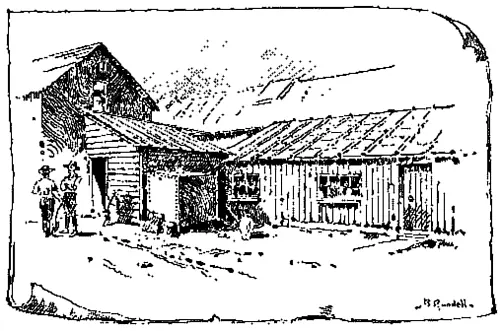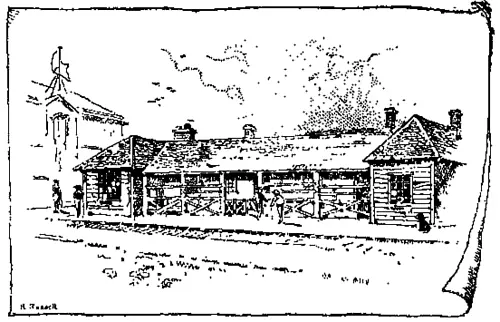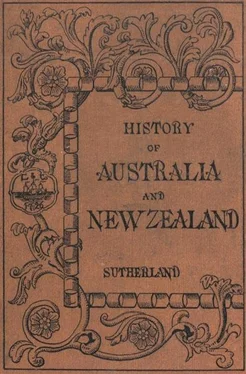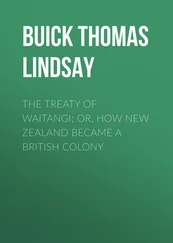CHAPTER VIII.
PORT PHILLIP, 1800-1840.
1. Discovery of Port Phillip.—The discovery of Bass Strait in 1798 had rendered it possible for the captains of ships bound for Sydney to shorten somewhat their voyage thither; and as this was recognised by the English Government to be a great advantage, a small vessel, the Lady Nelson , was sent out under the command of Lieutenant Grant, in order to make a thorough exploration of the passage. She reached the Australian coast at the boundary between the two present colonies of Victoria and South Australia. Grant called the cape he first met with Cape Northumberland. He saw and named Cape Nelson, Portland Bay, Cape Schanck, and other features of the coast. When he arrived in Sydney he called the attention of Governor King to a small inlet which he had not been able to examine, although it seemed to him of importance. In 1802 the Governor sent back the Lady Nelson , now under the command of Lieutenant Murray, to explore this inlet. Lieutenant Murray entered it, and found that a narrow passage led to a broad sheet of water, thoroughly landlocked, though of very considerable extent. He reported favourably of the beauty and fertility of its shores, and desired to name it Port King, in honour of the Governor; but Governor King requested that this tribute should be paid to the memory of his old commander, the first Australian Governor, and thus the bay received its present name, Port Phillip. Only sixty days later Flinders also entered the bay; but when he arrived, some time afterwards, in Sydney, he was surprised to find he was not the first discoverer.
It was at this time that the Governor in Sydney was afraid of the intrusion of the French upon Australian soil, and when he heard how favourable the appearance of this port was for settlement he resolved to have it more carefully explored. Accordingly he sent a small schooner, the Cumberland , under the charge of Mr. Robbins, to make the examination. The vessel carried Charles Grimes, the Surveyor-General of New South Wales, and his assistant, Meehan; also a surgeon named MʻCallum, and a liberated convict named Flemming, who was to report on the agricultural capabilities of the district.

The First House built in Victoria.
On arriving at Port Phillip they commenced a systematic survey, Robbins sounding the bay, and making a careful chart, while the other four were every morning landed on the shore to examine the country. They walked ten or fifteen miles each day, and in the evening were again taken on board the schooner. Thus they walked from the site of Sorrento round by Brighton till they reached the river Yarra, which they described as a large fresh-water stream, but without naming it. Then they went round the bay as far as Geelong. They carried a good chart and several long reports to the Governor at Sydney, who would probably have sent a party down to settle by the Yarra, had it not been that an expedition had already set sail from England for the purpose of occupying the shores of Port Phillip.
2. Governor Collins.—This was the expedition of David Collins, already mentioned. He brought out nearly 400 persons, of whom over 300 were convicts. There is good reason to believe that Collins from the first would have preferred to settle at the Derwent, in Tasmania, but at any rate he carried out his work at Port Phillip in a very half-hearted manner. Tuckey chose for the settlement a sandy shore at Sorrento, where scarcely a drop of fresh water was to be had, and where the blazing sun of midsummer must have been unusually trying to a crowd of people fresh from colder climates.

The First Hotel in Victoria.
It soon became apparent that the site selected would never prove suitable, and Collins sent Lieutenant Tuckey in search of a better place. That officer seems to have made a very inefficient search. He found no river, and no stream better than the little one on which the town of Frankston now stands. Here he was attacked by a great crowd of blacks, and had a conflict with them sufficiently severe to prevent his landing again. He was thus debarred from exploration by land, and the stormy weather prevented him from remaining long in the open bay. Tuckey therefore returned with a very gloomy report, and increased the despondency of the little community. Every one was dull and dispirited, except the two or three children who had been allowed to accompany their convict parents. Among these, the leader of all their childish sports, was a little lad named John Pascoe Fawkner, who was destined to be afterwards of note in the history of Port Phillip. Everybody grew dispirited under the heat, the want of fresh water, and the general wretchedness of the situation; and very soon all voices were unanimous in urging the Governor to remove. Collins then sent a boat, with letters, to Sydney, and Governor King gave him permission to cross over to Tasmania. He lost not a moment in doing so, and founded the settlement at the Derwent, to which reference has already been made.
Before he left, there were four convicts who took advantage of the confusion to escape into the bush, hoping to make their way to Sydney. One returned, footsore and weary, just in time to be taken on board; the other three were not again seen. Two are believed to have perished of hunger, and thirty-two years passed away before the fate of the third was discovered.
3. Western Port.—When Hume and Hovell returned to Sydney after their exploring expedition, Hovell insisted that the fine harbour he had seen was Western Port. He had really been at Geelong Harbour, but was all that distance astray in his reckoning. Induced by his report, the Government sent an expedition under Captain Wright to form a settlement at Western Port. Hovell went with him to give the benefit of his experience. They landed on Phillip Island; but the want of a stream of permanent water was a disadvantage, and soon after they crossed to the mainland on the eastern shore, where they founded a settlement, building wooden huts and one or two brick cottages. Hovell had now to confess that the place he had formerly seen was not Western Port, and he went off in search of the fine country he had previously seen, but came back disappointed. The settlement struggled onward for about a year, and was then withdrawn.
It is not easy to explain in a few words why they abandoned their dwellings and the land they had begun to cultivate. It seems to have been due to a general discontent. However, there were private settlers in Tasmania who would have carried out the undertaking with much more energy. For in Tasmania the sheep had been multiplying at a great rate, while the amount of clear and grassy land in that island was very limited. One of the residents in Tasmania, named John Batman, who has been already mentioned, conceived the idea of forming an association among the Tasmanian sheep-owners, for the purpose of crossing Bass Strait and occupying with their flocks the splendid grassy lands which explorers had seen there.
4. Batman.—John Batman was a native of Parramatta, but when he was about twenty-one years of age he had left his home to seek his fortune in Tasmania. There he had taken up land and had settled down to the life of a sheep-farmer in the country around Ben Lomond. But he was fond of a life of adventure, and found enough of excitement for a time in the troubled state of the colony. It was he who captured Brady, the leader of the bushrangers, and he became well known during the struggle with the natives on account of his success in dealing with them and in inducing them to surrender peaceably. But when all these troubles were over, and he had to settle down to the monotonous work of drafting and driving sheep, he found his land too rocky to support his flocks. Knowing that others in Tasmania were in the same difficulty, he and his friend Gellibrand, a lawyer in Hobart, in the year 1827 asked permission to occupy the grassy lands supposed to be round Western Port, but the Governor in Sydney refused. In 1834 some of them resolved to go without permission, and an association of thirteen members resolved to send sheep over to Port Phillip, which was now known to be the more suitable harbour.
Читать дальше














